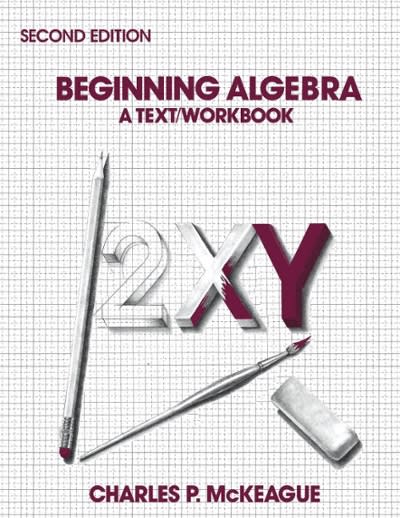Question
For a hypothesis test (#1 and #3), provide all of the following (correctly) to receive full credit. state the null (Ho) and alternative hypotheses (Ha)
For a hypothesis test (#1 and #3), provide all of the following (correctly) to receive full credit.
- state the null (Ho) and alternative hypotheses (Ha) (3 points)
- calculate the test statistic (z) and state the critical value or the p-value (3 points)
- Reject or fail to reject the null hypothesis (1 point)
- State the conclusion in plain English (3 points)
1. On NPR (National Public Radio) there was a news story where they claimed that only 44% of people in the United States know their grandparents' names. The theory is that we call them by other names, like Nana, Grandpa etc. You find this odd and get an SRS of 45 people and 21 people know their grandparents' names. Is this enough evidence to say that NPR has underestimated the percent of people who know their grandparents' names?
2. The dean of the University of Marin wants to make a report to its board and asks Dr Lovemath to find a 95% confidence interval for the pass-rates for Math 115 with an error of no more than 4%. How many students would she need for her sample? (5 points for the correct calculation; show the formula and values you use for full credit)
3. N Hill et al conducted a clinical study to compare the standard treatment for head lice infestation with the Bug Buster kit, which involves combing the hair four times per day. The researchers published their findings in the paper, "Single Blind, Randomized, Comparative Study of the Bug Buster Kit and over the counter..(blah blah)... in the treatment of head lice in the United Kingdom. " For the study, 58 patients were assigned the Bug Buster treatment kit and 74 were assigned a standard treatment (which involves really bad-smelling shampoo). Thirty-two of the Bug Buster patients were cured and 35 in the regular treatment group were cured. Do the data provide sufficient evidence to conclude that a difference exists in the cure rates of the two types of treatments? (follow the rubric above
4. Mary Math rolls a regular six-sided die and gets four threes in a row and stops. Would it be appropriate to state that her die favors threes? Could we conclude that the proportion of threes is greater than the expected 1/6? Why or why not? Hint: re-read the "caution" page before answering. (5 points)
Step by Step Solution
There are 3 Steps involved in it
Step: 1

Get Instant Access to Expert-Tailored Solutions
See step-by-step solutions with expert insights and AI powered tools for academic success
Step: 2

Step: 3

Ace Your Homework with AI
Get the answers you need in no time with our AI-driven, step-by-step assistance
Get Started


